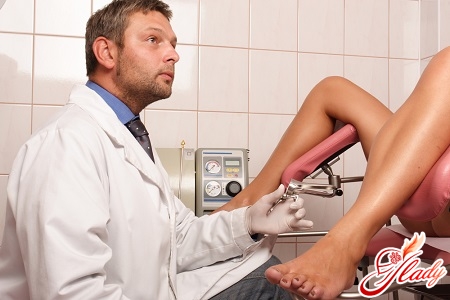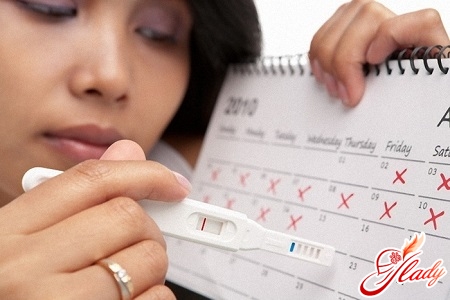
Like any other disease, cystitis cancause discomfort and unpleasant pain that can spoil our life. Especially if you have an acute form, accompanied by urination with blood. In this case, the problem requires an immediate solution, literally, since the consequences can be extremely disastrous. However, before contacting a specialist in this matter, it would be useful to try to understand the root causes of this disease and how to treat it. Perhaps, a few tips and recommendations will be useful on the way to a healthy and happy life without cystitis.
A few words about the nature of the disease
It should be noted that the disease in questionspeech, in most cases is infectious. In other words, if you do not start treating it in time, the problem will progress and turn into a more complex form with completely different consequences. However, in some cases, representatives of the fair sex (and this disease is more common among women) learn about cystitis after using certain medications. The same effect can occur after using certain intimate hygiene products, such as gels, sprays, oils, etc. However, it cannot be said that the so-called auxiliary medications are the main reason why cystitis can occur. After all, each person's body has its own characteristics and its own unique genetic material, and therefore the reaction to medications in different people can also be different. In this case, what unites people suffering from this disease, if the reasons for its occurrence are of a different nature? The answer to this question lies in the factor of inflammation of the bladder. This problem is faced by everyone who turns to specialists, trying to treat cystitis, which poisons their existence. This also applies to acute forms of the disease, such as when there is blood in the urine. In this case, any specialist will determine that the bladder lining has certain damages that can be caused, as mentioned earlier, by taking medications. This means that treatment of this problem requires a full examination, taking into account the characteristics of a particular organism, to identify that very harmful factor.
Hemorrhagic cystitis as an acute form of the disease
It has already been said that cystitis can havedifferent forms that determine the degree of damage to the genitourinary system. Thus, this disease can be infectious and non-infectious, primary and secondary, chronic and acute. This classification is conditional, since only taking into account the characteristics of the female body, the specialist you contact will be able to more accurately determine the form of your disease. However, if we are talking about cystitis, in which there is blood in the urine, most specialists classify it as a hemorrhagic acute form that requires special attention. It must be said that in this case, the indicators of medical statistics are somewhat contradictory, since they indicate that hemorrhagic cystitis is mostly characteristic of men, while the disease as a whole, according to the same data, is more feminine in nature. However, it should be clarified that the hemorrhagic form with urine pathology (blood inclusions) is more common in older men who are at risk for prostate diseases. However, practice shows that statistics are not always the main indicator, which means that one or another disease (in our case, hemorrhagic cystitis) can occur equally in both men and women. In short, regardless of gender, one should carefully observe intimate hygiene, since violation of such rules is one of the key causes of hemorrhagic cystitis. It is due to the development of the bacterial environment that the infection gets into the bladder cavity, gradually spreads there and subsequently causes inflammation of various natures. Therefore, the hemorrhagic form is infectious in nature.
How does blood get into the urine?
Having roughly understood the typology of the researchedforms of cystitis, you need to determine how the blood gets into the urine. Determining the cause of this problem will help in its further solution. By the way, hemorrhagic cystitis does not always mean that there will always be blood inclusions in the urine, you can observe their appearance from time to time. Moreover, you may not always feel severe pain, but the process of urination is usually difficult due to the presence of blood in the urine. There is a simple explanation for this: blood clots act as thrombi, passing through the urethra, as a result of which the excretion of urine itself is complicated. As a rule, with an acute form of cystitis (only in this case the disease can be hemorrhagic), the urine is completely stained with blood, and this process does not stop throughout the disease. However, there are cases when blood is released directly at the end of urination, if hemorrhagic cystitis has a milder and less advanced form. And if you do not delay going to a specialist, the treatment of this form of the disease will be easier and faster. It was previously said that the main reason for finding blood in the urine may be damage to the bladder lining. In extremely advanced cases, the damage may be ulcerative, and in this case, treatment will be long and painful. However, now we are talking about the standard form of cystitis, in which the epithelium of the bladder is damaged, the blood vessels are damaged, which leads to the appearance of blood inclusions in the urine. But the causes of damage to the bladder can be different factors, the predominant ones being infectious pathogens (the viral origin of which is characteristic of hemorrhagic cystitis).
Bacterial pathogens as the main cause of urine with blood
Speaking about cystitis, its viral natureflow should be considered not least. Thus, medical statistics say that among the most "popular" bacterial carriers of hemorrhagic cystitis, the leading position is occupied by E. coli. In fairness, it should be noted that this viral pathogen cannot be unambiguously classified as pathogenic. The fact is that the main place of localization of E. coli is the human intestine. It has its purpose there, because thanks to its work, food is digested faster. And the situation is completely different when E. coli ends up in the urine. Then it undergoes rapid reproduction, settles on the mucous membrane of the bladder and, to a certain extent, causes damage to its epithelium. As a result, as mentioned earlier, blood gets into the urine. And the treatment of this problem will directly depend on the degree and amount of damage to the lining of the bladder.
The reasons for the development of hematuria
However, E. coli and other bacteria,creating a favorable environment for the development of a bladder infection, are not the only cause of hematuria (this is what the presence of blood in the urine is called in professional medical language). After all, today cystitis is a fairly common disease among both the female half of society and its male part. Moreover, even children (mostly girls, and already in early adolescence) can catch such an “infection”. And this means that it is time to consider the full list of causes and factors that can contribute to the development of hemorrhagic cystitis.
- The first and most important factor is damagemucous membrane of the bladder, caused by bacterial (E. coli, fungi, etc.) character, the use of various medications and the use of hygiene. As described earlier, this factor can be regarded as a trigger trigger, contributing to complications of varying degrees in hemorrhagic cystitis.
- Hematuria can also be caused byunprofessional approach in gynecological and urological consultations, when the material is taken for analysis (smear), the introduction of catheters and other medical instruments.
- Also one of the main reasons, as a resultwhich develops cystitis and hematuria as one of its forms, is the weakening of the immune system, which can be caused by the improper functioning of the thyroid gland and malfunctions in the metabolic processes of the organism, respectively.
- Lack of proper intimate hygiene, whichentails the mandatory appearance of an infection that develops in the urine and gradually reaches the cavity of the bladder (contributes to damage to its shell).
- Certain periods of sexual development in women, such as the period of pregnancy, the postpartum period and menopause.
- Another important reason for the appearance of blood in the urine -long and frequent abstinence from emptying the bladder. It's not for nothing that doctors always warn their patients that going against nature and long refraining from the need to go to the toilet is extremely harmful. The fact is that in the overcrowded state, in which the bladder is located during abstinence, its muscle fibers are excessively stretched, which leads to a violation of blood circulation in the walls.

How to cure hemorrhagic cystitis?
Despite the rather serious consequences,which can cause acute hemorrhagic cystitis, it can and should be treated, the main thing is not to bring the disease to a severe stage, when only surgical intervention will help. And it is also important to understand that any treatment is a set of measures aimed at a complete recovery of the body. So, returning to the nature of cystitis, that is, its infectious (as a rule) origin, it should be noted that it is often treated with just antibacterial drugs. However, when taking antibiotics, a thorough consultation in a medical institution is always required so that the components of the drug do not harm other organs and functions of the body (after all, none of us would want to cure cystitis by harming other systems). In addition, when treating hemorrhagic cystitis, it is imperative to follow an appropriate diet and drinking regimen, as well as take vitamin and, possibly, anti-inflammatory complexes. This should be aimed, first of all, at increasing the patient's immune system. Physiotherapy, abstinence from sexual intercourse during the treatment period and a healthy lifestyle in general are also suggested, that is, the absence of bad habits (drinking alcohol and smoking), healthy sleep and avoiding stressful situations. In case of severe and advanced forms, the patient, in order to avoid the appearance of a large number of blood clots in the urine, is given a catheter, and for rinsing the bladder - an IV. It is worth noting that in the case of hemorrhagic cystitis, warming up the pelvic area is undesirable, although with ordinary cystitis, this method, as a rule, allows you to relieve pain. The fact is that from warming the vessels, blood can begin to flow into the urethra, on the contrary, with greater force. It is also important to remember that this disease is recurrent, that is, with incomplete treatment, it can recur after a certain period of time. Therefore, to detect an infection in the urine or identify other harmful factors, you should undergo a full examination every six months. In fact, it is not so difficult to devote time to this, because any disease is easier to treat in the early stages. Remember that God protects those who protect themselves, and pay as much attention to your health as possible!









